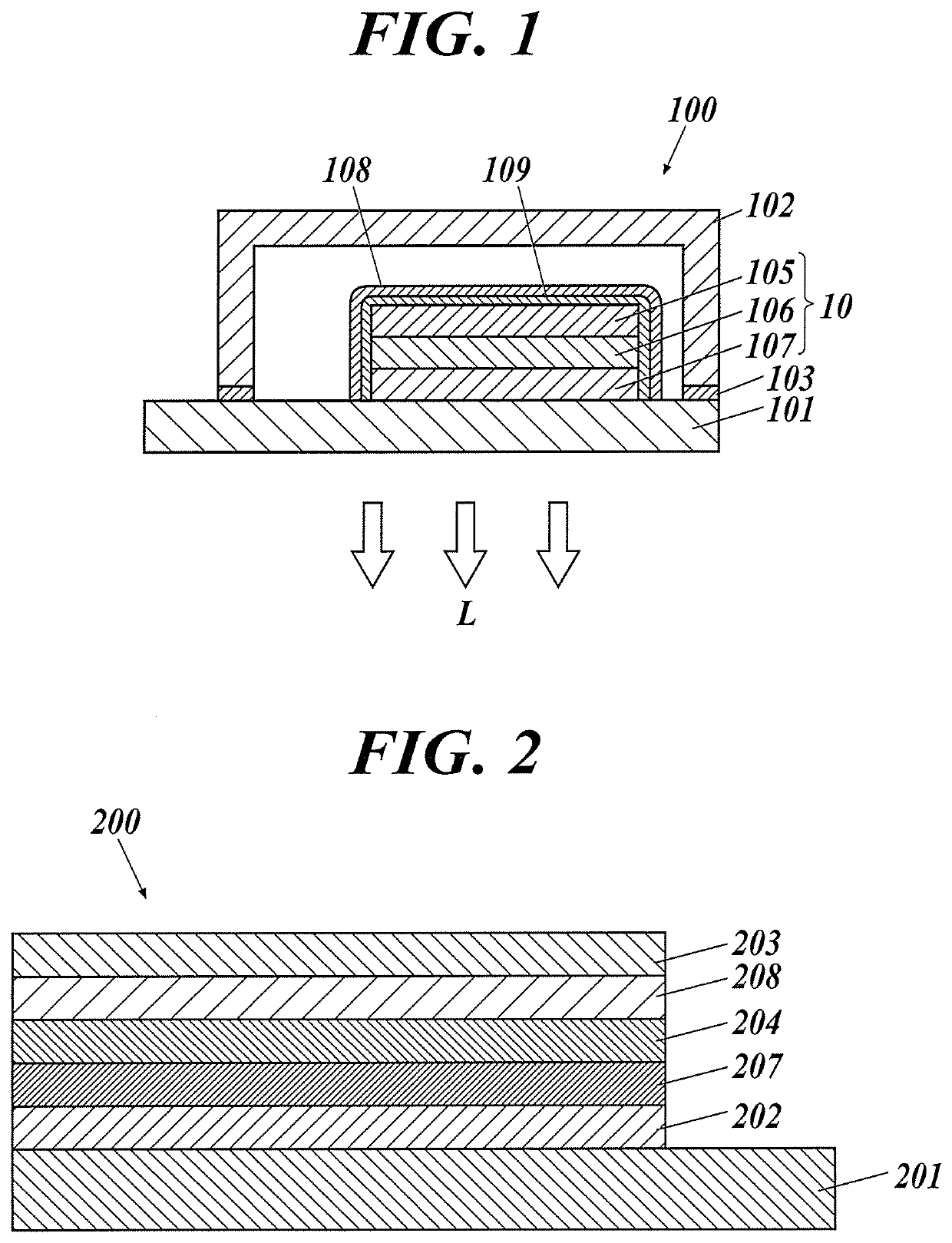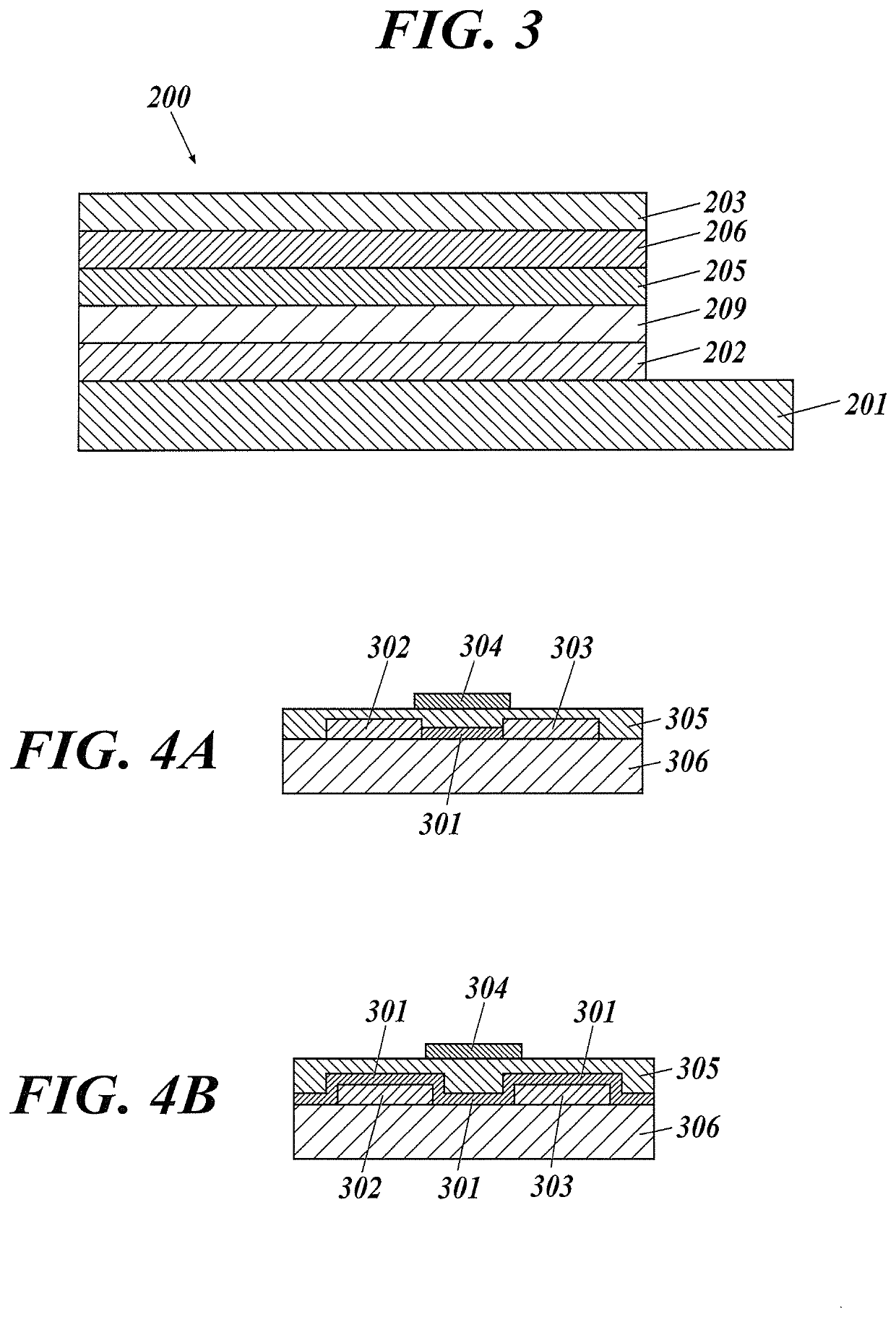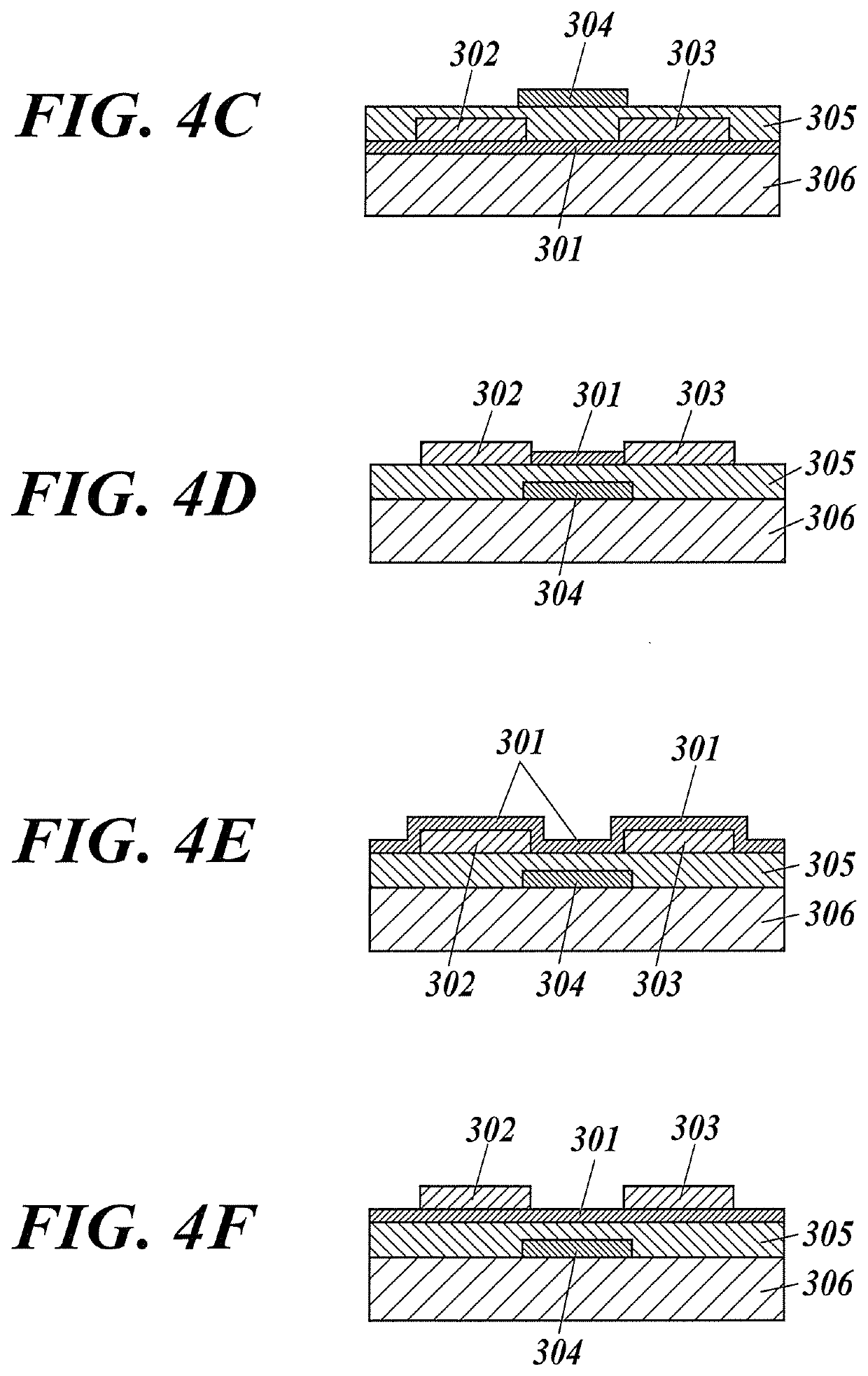Manufacturing method for electronic device
- Summary
- Abstract
- Description
- Claims
- Application Information
AI Technical Summary
Benefits of technology
Problems solved by technology
Method used
Image
Examples
example 1
(Preparation of Organic EL Element)
[0317]A glass substrate on which a 100 nm-thick film of ITO (Indium Tin Oxide) was formed as an anode was subjected to ultrasonic cleaning with isopropyl alcohol, dried with dry nitrogen gas and UV-ozone cleaning, and fixed to a substrate holder of a vacuum evaporation device.
[0318]Then, HAT-CN (1,4,5,8,9,12-hexaazatriphenylene hexacarbonitrile) was evaporated to a thickness of 10 nm to provide hole injection-transport layer.
[0319]Next, α-NPD (4,4′-bis[N-(1-naphthyl)-N-phenylamino]biphenyl) was vapor-deposited on the hole injection layer to provide a hole transport layer having a thickness of 40 nm.
[0320]Then, mCP (1,3-bis(N-carbazolyl)benzene) as a host material and bis[2-(4,6-difluorophenyl)pyridinato-C2,N)(picolinato)iridium(III)(FIrpic) as a light-emitting compound were co-evaporated to be 94% and 6% by volume, respectively, to provide a 30 nm-thick light-emitting layer.
[0321]Thereafter, BCP (2,9-dimethyl-4,7-diphenyl-1,10-phenanthroline) was v...
example 2
[0341]Using the same constitution as that of the sealing film 1 of Example 1, the metal alkoxide and the metal carboxylate raw material used for the sealing film were changed as indicated in Table II, and the sealing performance was evaluated.
[0342]The composition and evaluation results of the sealing film are indicated in Table II.
TABLE IIOrganic thin filmElution(Sealing film: Sol-gel liquid composition)Sealing filmpreventingFilm formingDark spotNo.filmMetal alkoxideAlcoholcondition*1resistanceRemarksSealing filmPresentTi(OiPr)4F-1VUV irradiationFIG. 14Present2-1for 1 minuteinventionSealing filmPresentTi(OEt)4F-1VUV irradiationFIG. 14Present2-2for 1 minuteinventionSealing filmPresentZr(OiPr)4F-1VUV irradiationFIG. 14Present2-3for 1 minuteinventionSealing filmPresentSn(OtBu)4F-1VUV irradiationFIG. 13Present2-4for 1 minuteinventionSealing filmPresentTa(OtBu)5F-1VUV irradiationFIG. 14Present2-5for 1 minuteinventionSealing filmPresentFe(OCOCH3)2F-1VUV irradiationFIG. 13Present2-6for 1 ...
example 3
[0344]The sol-gel solution used in Example 1 was applied onto a silicon wafer, and a thin film was produced under the same film forming conditions as in Example 1. The prepared thin film was analyzed by the above-mentioned SEM / EDS (Energy Dispersive X-ray Spectoroscopy: energy-dispersive X-ray analyzer) to obtain the values of the following expression (a). SEM / EDS equipment was made by JSM-IT100 (JEOL Ltd).
[0345]Elemental analysis by SEM / EDS (energy dispersive X-ray spectrometer) and the values obtained by the following expression (a) are indicated in Table III.
F / (C+F) Expression (a):
(In Expression (a), F and C represent the concentrations of fluorine and carbon atoms, respectively.)
TABLE IIISol-gel liquid compositionMetal alkoxideMetal alkoxideF / (C + F)Ti (OiPr)4F-10.20Ti (OiPr)4F-20.33Ti (OiPr)4F-50.42Ti (OiPr)4F-60.19
[0346]From the results in Table III, it was confirmed that the thin film prepared from the sol-gel solution of Example 1 retained fluorine atoms in the film at a ce...
PUM
 Login to View More
Login to View More Abstract
Description
Claims
Application Information
 Login to View More
Login to View More - Generate Ideas
- Intellectual Property
- Life Sciences
- Materials
- Tech Scout
- Unparalleled Data Quality
- Higher Quality Content
- 60% Fewer Hallucinations
Browse by: Latest US Patents, China's latest patents, Technical Efficacy Thesaurus, Application Domain, Technology Topic, Popular Technical Reports.
© 2025 PatSnap. All rights reserved.Legal|Privacy policy|Modern Slavery Act Transparency Statement|Sitemap|About US| Contact US: help@patsnap.com



